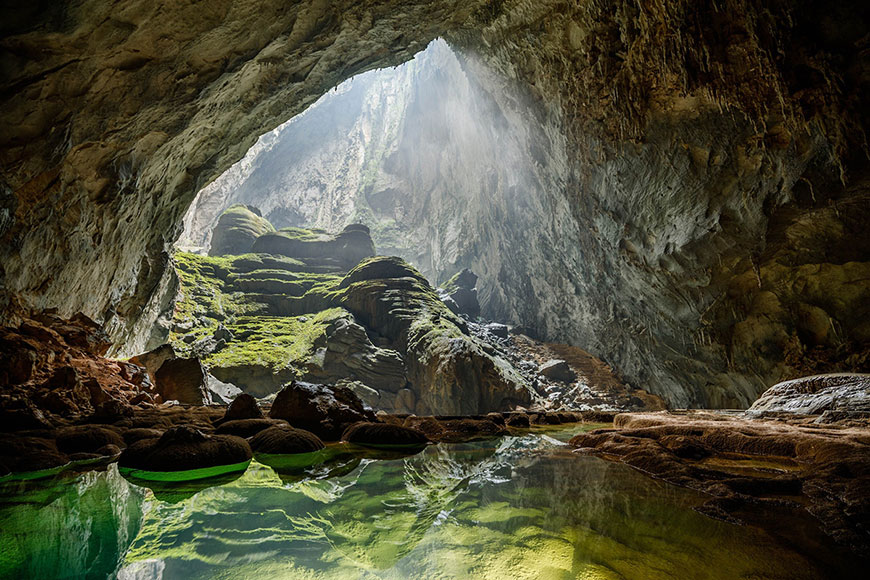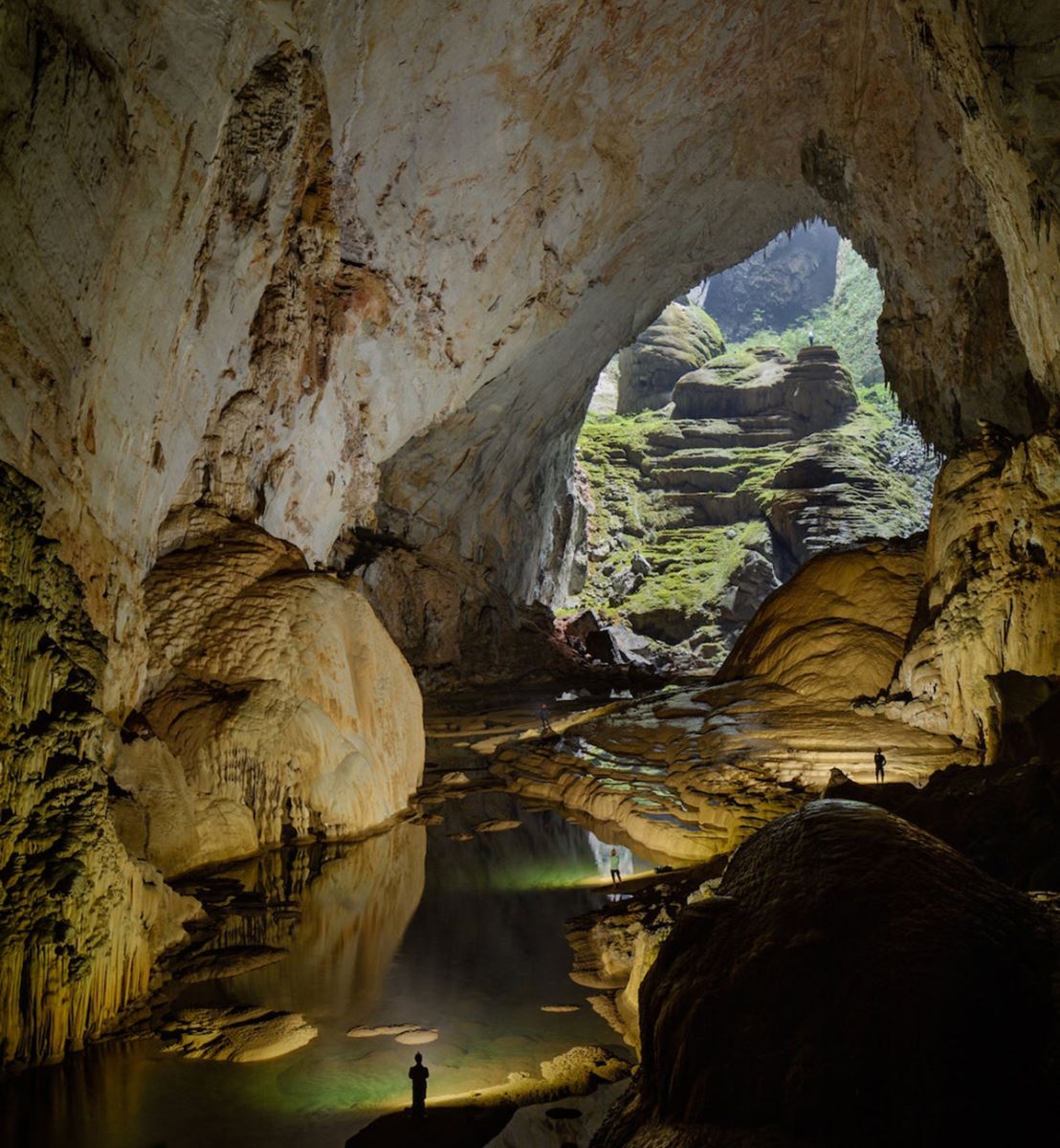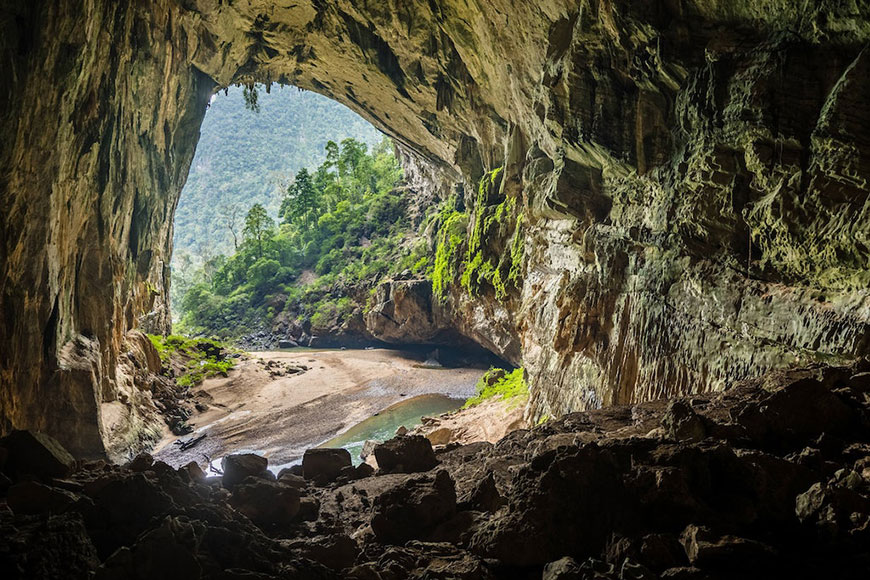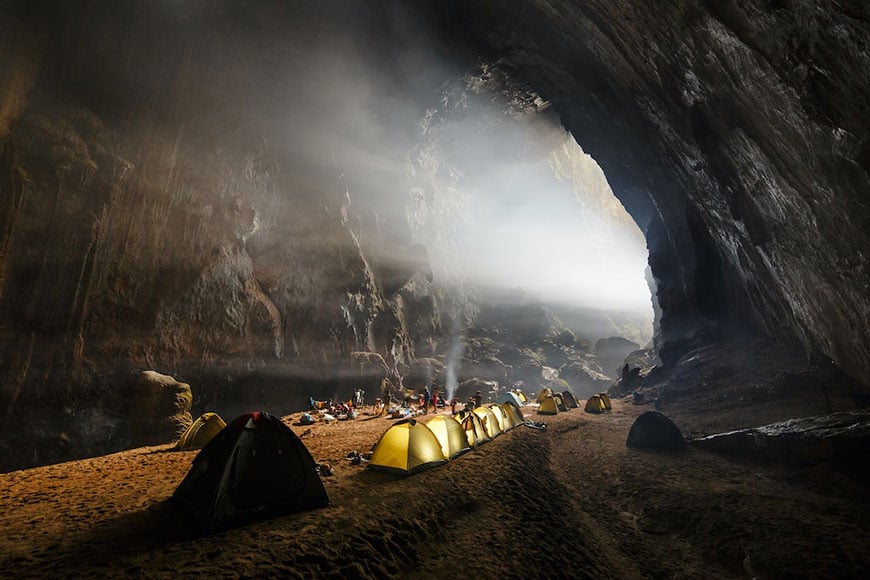The world’s largest cave, Hang Son Doong (Mountain River Cave) in Vietnam, has suddenly become a lot larger thanks to the remarkable discovery of an underwater tunnel connecting it to another cave.
 Inside the world's largest cave © Ryan Deboodt / Oxalis Adventure Tours
Inside the world's largest cave © Ryan Deboodt / Oxalis Adventure Tours
The discovery was made in April by a trio of British divers, who were invited to explore the cave in central Vietnam’s Phong Nha Ke Bang National Park by Howard Limbert, leader of the caving team that first mapped Son Doong in 2009.
The three divers – Jason Mallinson, Rick Stanton and Chris Jewell – were part of the team that rescued the Thai soccer team in 2018. Tasked with exploring Son Doong’s extensive network of waterways, they discovered a previously unknown tunnel linking it to another giant cave called Hang Thung.
►
Do you know Tham Phay, the new Son Doong?
 Cavers exploring Son Doong © Ryan Deboodt / Oxalis Adventure Tours
Cavers exploring Son Doong © Ryan Deboodt / Oxalis Adventure Tours
How big is Hang Son Doong?
At more than 200m high (up to 503m in parts), 175m wide and 9.4km long, Son Doong was already huge – so big that it could easily accommodate any of the world’s other largest caves and you could fit several forty-storey skyscrapers standing upright. The new discovery adds an extra 1.6 million cu metre of volume to its existing 38.5 million cu metre, which is the equivalent of climbing Mount Everest’s 8848m and discovering a mound that made it 1000m taller, as Limbert recently told CNN.
Son Doong was first discovered by a local man, Ho Khanh, in 1990. Taking shelter from a storm at the base of a huge cliff in the heart of the jungle, he found a deep hole at the base of the rock that was emitting wind and even puffs of cloud. He didn’t explore further, and its location was forgotten for 19 years until he rediscovered the entrance and led Limbert and his team of divers to it.
'We were the first people to enter the cave,' Limbert told Lonely Planet. 'There is no evidence that anyone lived in Son Doong in the past. Usually it’s easy to see this in a cave… also, all the entrances and exits involve near-vertical descents of at least 85m using technical equipment.' By contrast, a 5000-year-old stone axe was discovered in a nearby cave, suggesting that Son Doong’s relative inaccessibility might indeed have deterred prehistoric explorers.
 The entrance of the incredible cave © Ryan Deboodt / Oxalis Adventure Tours
The entrance of the incredible cave © Ryan Deboodt / Oxalis Adventure Tours
What is inside Hang Son Doong?
However, the cave is rich in other forms of life. 'We have seen monkeys that are able to climb down 200m to visit the jungle within the cave where they collect snails,' says Limbert. 'We’ve also seen snakes and other animals including squirrels, rats, flying fox as well as birds and bats.' He and his team also discovered seven new species of fish, spider, scorpion, shrimp, wood lice and plankton – all of them completely white and without eyes, the evolutionary consequences of existing in complete darkness.
Yet there is plenty to see in the cave, with parts of it illuminated by two dolines – or sinkholes – that can flood the cave with beams of spectacular sunlight. Within its depths are the world’s largest stalagmites and a jungle with trees up to 50m high. 'You can see up to 1.5km,' says Limbert, 'but the cave’s own weather system can make clouds that are spectacular but cut down visibility.'
Although he has explored the cave over 100 times, Limbert’s enthusiasm for the cave’s beauty remains undiminished. 'There is nowhere like this place anywhere in the world,' he says. 'It is not just the size – though it does matter (as they say) – but the variety of unusual and amazing locations within the cave, such as swimming pools in the dark and 400-million-year-old fossils.'
 Travellers trek inside the Vietnamese cave © Ryan Deboodt / Oxalis Adventure Tours
Travellers trek inside the Vietnamese cave © Ryan Deboodt / Oxalis Adventure Tours
How can I visit Hang Son Doong?
The cave is open to visitors, but access is strictly controlled and limited to 1000 a year. All tours are organised and led exclusively by Oxalis Adventure Tours, for which Howard Limbert is one of the technical directors along with his wife, Deb. Visits are restricted by the rainy season to the months between the end of January and the end of August, after which the cave becomes impassable.
The entrance to
Phong Nha-Ke Bang National Park (UNESCO Heritage) is accessible from Son Trach town, which is 50km north of Dong Hoi. There are regular bus connections to Dong Hoi from Hue, Hoi An and Danang. A typical tour costs $3000 (of which $660 goes to Phong Nha Ke Bang National Park) and lasts four days. All groups are capped at 10 visitors and include a guide (all tours are led by at least one of the British cavers involved in the original exploration), a safety assistant, cooks, porters and a park ranger. A degree of fitness is required, warns Limbert, but you don’t have to be an experienced caver or climber – some trekking experience is enough.
Central Vietnam’s network of caves has transformed the region. Once one of Vietnam’s poorest, it is now the world’s most popular spot for cave exploration and the country’s fastest-growing tourist destination. For Howard Limbert and his team this is all well and good, but conservation remains a paramount concern, especially as 70% of the region’s caves remain unexplored. 'All customers must follow strict rules to protect the fragile caves,' he reminded us.
As for Son Doong and Hang Thung, Limbert says the plan is for the divers to return in 2020 and use special mixed gases to explore even deeper than the 503m plumbed in April. The world’s largest cave may have gotten a lot bigger, but there’s the possibility that it may get bigger still.
►
You can read our Guide to top 8 NAtional Parks in Vietnam
Article updated in September 2923